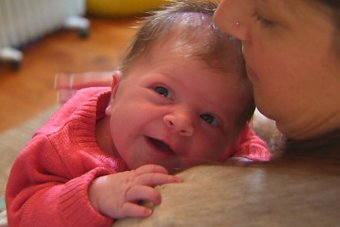Groundbreaking research has found the heavier a baby is at birth, the more likely they are to develop childhood cancer.
Professor Terry Dwyer, executive director of the George Institute for Global Health, said a “significant amount of evidence” had been compiled which “effectively shows that childhood cancer incidence rises with increasing birth weight”.
The International Childhood Cancer Consortium looked at babies and cancer incidence in 380,000 live births, from studies going back more than 50 years.
Professor Dwyer said after adjusting for gestational age and sex, for every kilogram increase in birth weight, there was an increased risk of 26 per cent for all cancers.
But interestingly, the mother’s weight at birth was not a factor.
“There were no significant interactions with maternal pre-pregnancy weight or pregnancy weight gain,” he said.
In Australia, women tend to be older and often heavier when giving birth than in previous decades.
The study, published in Paediatric and Perinatal Epidemiology, is the first research to collect data before children develop cancer.
Experts said it was an important finding because very little was known about what causes childhood tumours.
“Now that we know there is a correlation between birth weight and childhood cancer, we can begin to investigate why there is a correlation,” Professor Dwyer said.
“It’s an important piece of evidence that begins to help fill in the puzzle about childhood cancer.”
Professor Dwyer was one of the scientists who uncovered the link between babies sleeping on their stomachs and an increased risk of Sudden Infant Death Syndrome (SIDS).
His work has lead to major public health campaigns to put babies on their backs to sleep and a reduction in the number of babies dying from SIDS.
Scientists said these new findings are an important step closer to finding out what causes childhood cancer.
“We will also now look at cord blood measurements from infants in these studies to determine whether growth hormones of various types might explain what we have found,” Professor Dwyer said.
Mother’s weight at birth not a factor
Peta Steadman’s new baby daughter Frankie was just over 4 kilograms when she was born, which Ms Steadman was told is on the larger side.
Her older daughter Summer was 3.78 kilograms.
“When Frankie was born, her head was in the 95th percentile, but I knew that I was having a bigger baby as I had a couple of growth scans so I was prepared,” she said.
“I’ve got some friends who have even bigger babies than Frankie.”
She said the doctors did advise her not to put on too much weight when she was pregnant so the baby would not be too large.
“I had to watch not eating too many carbohydrates and sweet things when I was pregnant,” she said.
She said new mothers would be relieved to hear this research has found no link between the mother’s weight and the baby’s risk of childhood cancer.
Fast facts on childhood cancer:
- One in 500 Australian children will develop a cancer before 15 years of age — that is 600 Australian children diagnosed every year.
- Childhood cancer is the single greatest cause of death from disease in Australian children, with three children losing their lives to cancer every week.
- Children with cancer are currently treated with adult cancer drugs, because that is all that is available.

